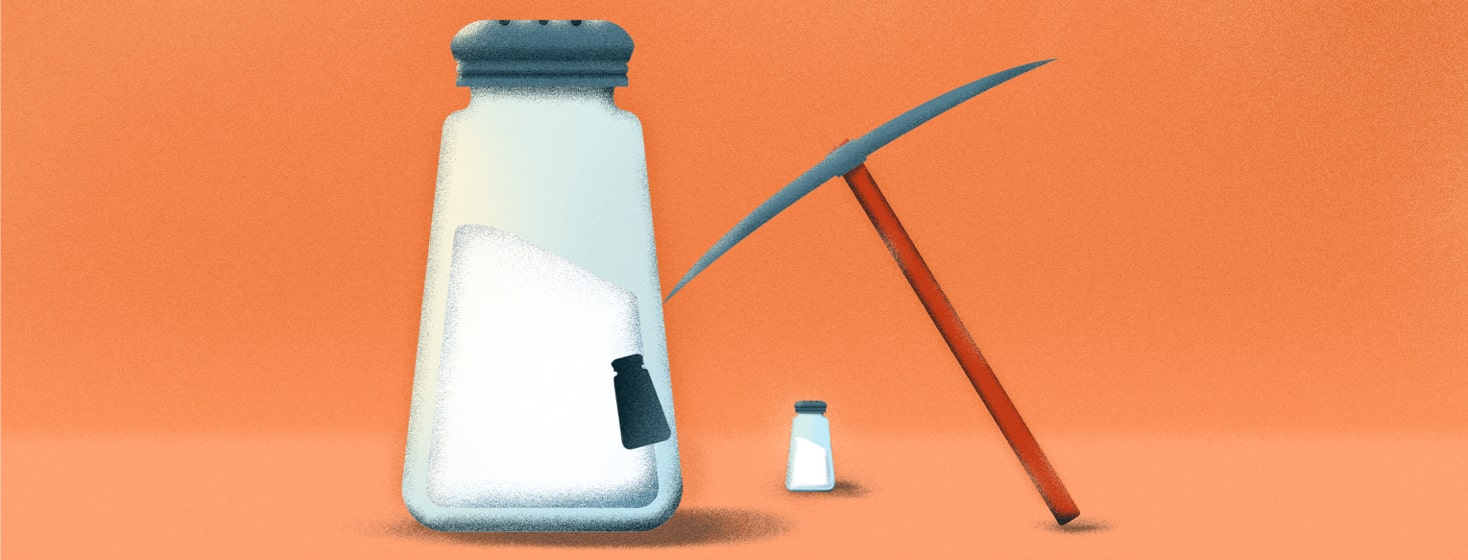How to Lower Sodium Intake for Better Diabetes Management
While it may not affect blood glucose levels, living a too "salty" life can increase blood pressure, therefore increasing the risk of heart disease, stroke, cardiovascular disease, and kidney disease in Americans.1
But it’s more than just the saltshaker that contributes to a high-sodium lifestyle. Check out these common high-sodium food culprits and how to swap them for healthful alternatives.
What are the daily sodium recommendations?
The general recommendation for people with diabetes is 2300mg of sodium per day. But those with cardiovascular risks such as high blood pressure or heart failure should limit sodium intake to 2000mg per day. Certain items can quickly drive up your intake to a greater quantity than desired.2
Healthier alternatives to salty foods
Some of our favorite items can be packed with sodium. Here are a few items to keep in mind when thinking about sodium intake.
Deli meat
While it may be convenient, deli meat often undergoes an extensive amount of processing, making it higher in sodium than other proteins. For example, smoked deli turkey has approximately 225mg of sodium per ounce. Considering that it takes 3 to 4 ounces of deli meat to create a hearty sandwich, those sodium levels can really add up.3
Instead, at the meat counter, ask the butcher to thinly slice chicken breast. Marinade the chicken with fresh or dried herbs, and cook low and slow to get that roasted deli flavor. Or cook a large number of lean proteins to enjoy throughout the week. If you are crunched for time, opt for a rotisserie chicken, and remove all skin.
Canned food items
To clarify, "reduced-sodium" doesn’t necessarily mean low sodium. It simply means it has 25 percent less than the original product. While opting for lower sodium is a significant step in the right direction, reading food labels is critical. Products that are low in sodium mean that there is less than 140mg per serving.
Ideally, opt for a no-salt-added option and add your own flavor. But, if these choices are unavailable at your local grocery store, don’t worry! Instead, give your canned foods, like beans, a thorough rinse that can remove up to 40 percent of the sodium content. If it’s a canned food that you can’t rinse like soup, bulk up the base with naturally low sodium foods like fresh or frozen veggies or whole grains, like barley or brown rice.
Frozen or ready-made foods
After a long day, picking up a ready-made dish or pop a frozen entrée into the microwave is very appealing. But, while your meal may be ready in a matter of minutes, it often comes packed with sodium. But you don’t have to choose between mealtime convenience and low sodium intake.
Compare food labels for sodium by calories, then pair with a side of high potassium foods, like a spinach and tomato salad, roasted acorn squash, or a side of cantaloupe. To save time, buy prewashed baby spinach, precut squash, or melon. And if you can commit to cooking a couple of times a week, you are all set!
I recommend cooking once and eating three times. Be sure to double or triple up on various entrees and side dishes to mix and match throughout the week. It can help prevent food boredom while decreasing the reliance on high sodium packaged foods.
Condiments, dressings, and seasonings
Do you have a heavy hand with condiments, seasonings, and marinades? While they may add flavor to your favorite dishes, they are a top culprit for high sodium levels. But don’t worry, you don’t need to settle for flavorless foods to better your health.
Instead, use herb and spice blends to elevate your dish’s flavor profile while reaping the benefits of disease-fighting antioxidants. Create your own unique blend using the contents from your pantry. Then, revolutionize vegetables and lean proteins with a quick sprinkle to increase mealtime satisfaction without relying on high-sodium flavor enhancers.
Then, if you enjoy soy sauce on sushi or in your favorite Asian-inspired recipes, try swapping soy sauce for coconut aminos. While one tablespoon of regular soy sauce has 960mg of sodium, coconut aminos only have 390mg.3What are the ways that you keep your sodium intake in check?

Join the conversation